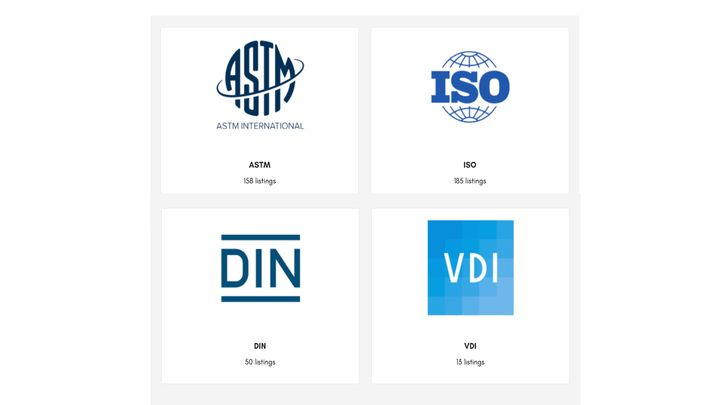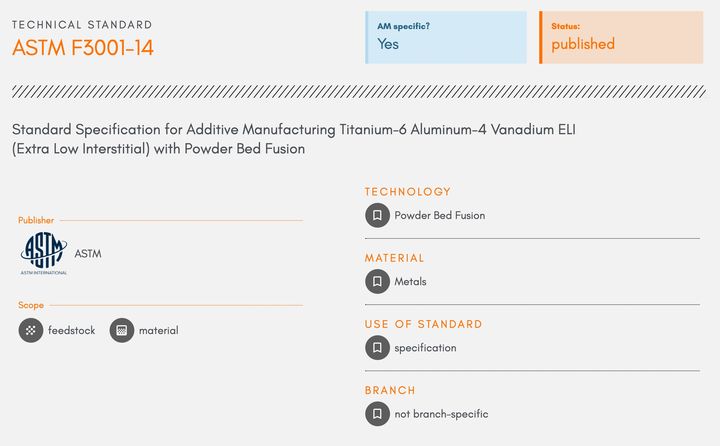
We Boost AM has published a comprehensive database of official standards related to additive manufacturing.
The site was produced by Mobility Goes Additive, who describe themselves as:
“MGA is the leading international network of companies, institutions and research institutes that pushes 3D-printed applications for professional use in several sectors.”
And:
“To make our members more visible we created WeboostAM, a database with further information about our member companies.”
The We Boost AM site now includes a rather comprehensive database of known standards. As of this writing, the site includes 326 entries from:
- ASTM (158 listing)
- ISO (185 listings)
- DIN (50 listings)
- VDI (15 listings)
- DIN EN (40 listings)
- DVS (4 listings)
- AWS (2 listings)
- IEEE (2 listings)
- UL (2 listings)
- CF$ (1 listing)
The site allows searching by a variety of factors, including:
- Publisher
- Document number
- Status (Published, draft, etc.)
- Use (Test, guideline, specification, etc.)
- Technology (3D printing process)
- Material type
- Scope (part, production, personal, etc.)
Each entry shows the attributes of the standard. Here’s an example, ASTM F3001-14:

The database display does not seem to have a link to the actual standard, and that’s likely because many of the standards are not publicly available: they are sold for a fee by their respective organizations.
However, the database allows for the unique approach of searching for standards across different publishing organizations. Once identified through the database, one could then look them up in the respective standards documents.
Standards for additive manufacturing are a work in progress, as the technology has been maturing rapidly. With the recent accessibility of a much wider array of possible materials, there are many more manufacturers making use of the technology. They certainly require adherence to standards in order to provide quality products to their clients, and this database could be of use to them.
Please check this site out if you have an interest in AM standards, and while you’re there you can also look up a series of interesting use cases for additive technology that might stimulate your imagination.
Via We Boost AM (Hat tip to Benjamin)
